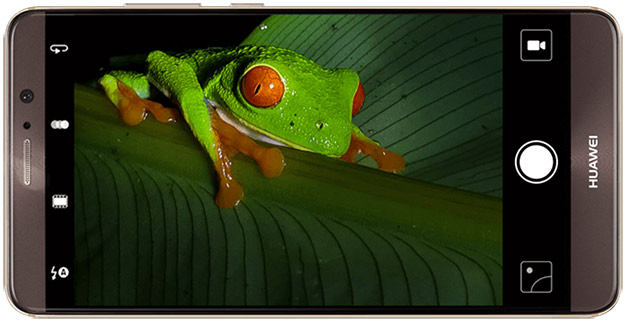Huawei Mate 9 Review: A Well-Appointed Android Device, At A Bargain Price
Huawei Mate 9 Review: Design, Display, and Components
The Mate 9 is larger than your average phone, placing it clearly in “phablet” territory. Above the 5.9-inch display sit a selfie camera, proximity sensor, ambient light sensor, and secondary microphone hidden under the earpiece speaker grill. The top edge hosts an earphone jack and infrared sensor. The bottom edge hosts a USB-C port and two grills. Some have noted that these two grills cover speakers alone, but that's only partly true.
If you peek at the Stereo+ setting above, you’ll see that the Mate 9 can automatically switch from euphony (Merriam-Webster: “pleasing or sweet sound”) to stereo. “Euphony” here is a euphemism for when the phone is in portrait mode and uses the earpiece as something akin to a tweeter while the lower speaker fills out <snicker> the mids and bass. Turn the phone to landscape and the Mate 9 attempts to even out the channels for a more balanced attempt at
Unlike Samsung “Edge” models, the Mate 9’s display does have a sliver-thin side bezel. We understand needing a wider bezel along the top to accommodate the earpiece, camera, and sensors, but the half-inch gap along the bottom that supplies nothing more than a company logo seems gratuitous and wasteful.
On the phone’s back, the Leica dual-camera waits atop a fingerprint sensor, flanked by a dual-tone flash and dual camera sensors. The 8MP front camera sports
The back of the Mate 9 has a matte silver finish with two mirrored strips that run around the top and bottom circumference of the phone’s edges.
While nothing stands out too much about the Mate 9’s exterior, the interior is a completely different story. This beast’s processing power comes from the Huawei Kirin 960, a more powerful and faster version of the Kirin 950. The Kirin 960 features a slight 100 MHz bump (to 2.4 GHz) to its quad-core A73 Cortex processor complex, but most of the fresh juice springs from a new GPU, revised ARM interconnect, and a significantly faster memory controller (LPDDR4-1800). For example, the Kirin 950 could only perform H.264 encode/decode at 1080p. The Kirin 960 knocks that up to 2160p30, which is no small feat.
On top of these improvements, Huawei adds in its Machine Learning Algorithm -- a sort of (poorly branded) quality of service engine aimed at processor operations rather than network traffic. This Machine Learning Algorithm stands as one of the device’s more interesting features, and we’ll circle back to it shortly.
In our review of the LG G6, just to take one example, we talked up that device’s display. In particular, we enjoyed its ability to display 4K video in 16:9 with a crystalline 564
The phone also packs in 64GB of storage, 4GB of RAM, and a 4,000 mAh battery. Note that the Mate 9 cannot charge wirelessly without the help of a third-party peripheral, however.
A fairly standard set of included items arrives in the box: a USB Type-A to USB-C charging cable, a SuperCharge wall adapter, a micro-USB (female) to USB-C (male) adapter, an entry-level pair of earbuds, a SIM tray access pin, and a protective plastic shield for the back and corners of the phone. The











